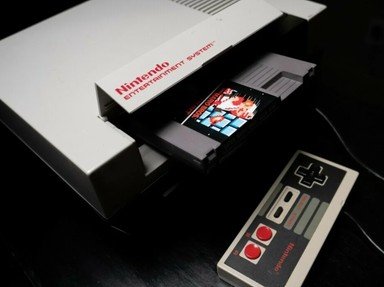Quiz Answer Key and Fun Facts
1. Game 40: "Battletoads" is a beat 'em up title that is both highly inventive and also infamous for how darn near impossible the difficulty is. The sequel to this game featured a cross over with what other gaming franchise?
2. Game 39: "Dragon Warrior IV" would be the last American release in the "Dragon Quest" series in North America until what game?
3. Gmae 38: "Life Force" was released under what title in Japan?
4. Game 37: "Jackal" was released in the arcades in North America as what?
5. Game 36: For those who love "Zelda II: The Adventure of Link", you will adore what title?
6. Game 35: "StarTropics" is a very memorable title for the NES. It also features a riddle that cannot be solved within the game itself; rather, you must dip a piece of paper that came with the packaging to get the answer to a riddle in the game itself. If you dip the paper into the water, what number will it reveal?
7. Game 34: What game is the first to use the famous "Konami Code"?
8. Game 33: If you cross the weapon selection of "Mega Man" with the wall jump technique of "Ninja Gaiden", you get what title?
9. Game 32: "Snake Rattle 'n' Roll" is a Rare title whose title is a variation of the famous song "Shake, Rattle and Roll". Who first recorded "Shake, Rattle and Roll"?
10. Game 31: "Micro Machines" is an unlicensed NES title that had used a special accessory known as what?
Source: Author
berenlazarus
This quiz was reviewed by FunTrivia editor
kyleisalive before going online.
Any errors found in FunTrivia content are routinely corrected through our feedback system.
